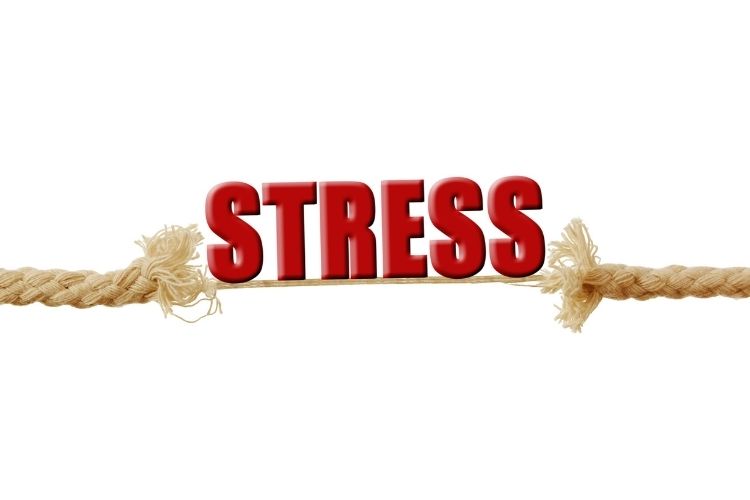Stress. It’s something that can affect us all.
Not all stress is bad. Used in the right way, it can help us to perform well – like meeting a deadline or sitting an examination.
However, longer term stress (chronic stress) is not good for our health, and has been linked to cancer amongst other things.
In the workplace, like any mental ill health, if it’s not recognised and managed appropriately, this can lead to lost time, reduced productivity and decreased staff morale. It could also result in court action and damaged reputation.
Not only that, but if you know or strongly suspect someone already suffers from stress, anxiety, and/or depression, as an employer you have a higher legal duty of care to that individual. That’s not new, it’s been the legal position since the case of Paris v Stepney Borough Council [1951].
This article will consider what stress is and signs to look out for, the legal duties placed on employers, and the 16 steps that need to be taken to comply with both statutory and civil law.
What is Stress?
Stress is usually classed as a symptom rather than an illness, medically. The underlying illness is often anxiety or depression.
Most people are likely to say they’re stressed to avoid the stigma associated with depression or anxiety. Sick notes will often cite anxiety and depression as these are the illnesses caused by work-related stress and used in personal injury cases.
In order to claim damages, an individual must suffer from a mental illness.
The Health and Safety Executive (HSE) have defined work-related stress as “the adverse reaction to excessive pressure”.
Anxiety and stress levels may have increased due to the Covid-19 situation, so it’s important that employers and managers keep this in mind when assessing and managing risk.
Regularly check-in with your workers and take considered action based on what they tell you.
Stress is personal, and it will affect people in different ways.
It’s OK to not be OK.
Symptoms of stress can include:
- negative or depressive feelings
- disappointment
- increased emotional reactions – more tearful or sensitive or aggressive
- emotional snapping
- loneliness, withdrawal
- loss of motivation, commitment and confidence
- mood swings
- confusion, indecision, overwhelm
- racing thoughts or difficulty concentrating
- changes in normal behaviour
- changes in eating habits
- increased smoking, drinking, or drug taking
- changes in sleep patterns
- irritable
- avoidance of things or people
Your legal obligations
The duties in law fall under the general duties established under the Health and Safety at Work etc Act 1974 which states that:
it shall be the duty of every employer to ensure, so far as is reasonably practicable, the health, safety and welfare at work of all his employees”.
Regulation 3 of the Management of Health and Safety at Work Regulations 1999 require an assessment of the work-related risks to which employees are exposed – and this would include stress.
These are both statutory duties.
At the moment, stress or stress-related ill health is not reportable under RIDDOR (Reporting of Injuries, Diseases and Dangerous Occurrences Regulations 2013).
However, there have been many cases taken through the civil courts, one of the first successful ones where an employee claimed from an employer for psychiatric illness resulting from work pressures was Walker v Northumberland County Council [1995].
The ruling in this case is important because it determined that an employer is only liable in tort for foreseeable harm – and that until an employee complains or otherwise indicates that they are suffering from stress, an employer will not be expected to foresee it.
Following the decision by the Court of Appeal in the cases heard under Sutherland v Hatton [2002] guidelines were developed to clarify the duties in common law and are considered very useful for employers wanting to demonstrate legal compliance and reduce any liability for work-related stress claims.
The Hatton Propositions
- There are no special control mechanisms applying to claims for psychiatric (or physical) illness or injury arising from the stress of doing the work which the employee is required to do. The ordinary principles of employer’s liability applies.
- The threshold question is whether this kind of harm to this particular employee was reasonably foreseeable. This has two components:
(a) there must be an injury to health as distinct from occupational stress (eg they must have anxiety or depression); and
(b) this must be attributable to stress at work as distinct from other factors. - Foreseeability depends upon what an employer knows (or ought reasonably to know) about the individual employee. Because of the nature of mental disorders, it is harder to foresee than physical injury, but may be easier to foresee in a known individual. (An employer is usually entitled to assume that the employee can withstand the normal pressures of the job unless he knows of some particular problem or vulnerability.)
- The test is the same whatever the employment. There are no occupations which should be regarded as intrinsically dangerous to mental health.
- There are factors which are likely to be relevant in answering the threshold question, which include:
(a) the nature and extent of the work done; and
(b) signs of impending harm to health. - The employer is generally entitled to take what he is told by an employee at face value, unless he has reason to think otherwise.
- To trigger a duty to take steps, the indications of impending harm to health arising from stress at work must be plain enough for any reasonable employer to realise that he should do something about it.
- An employer is only in breach of a duty if he has failed to take steps which are reasonable in the circumstances, bearing in mind the magnitude of the risk of harm occurring, the gravity of the harm which may occur, the costs and practicality of preventing it, and the justifications for running the risk.
- The size and scope of the employer’s operation, its resources and the demands it faces are relevant in deciding what is reasonable; this includes the interests of other employees and the need to treat them fairly, for example, in any redistribution of duties.
- An employer can only reasonably be expected to take steps which are likely to do some good; the court is likely to need expert evidence on this.
- An employer who offers a confidential advice service, with referral to appropriate counselling or treatment services, is unlikely to be found in breach of duty.
- If the only reasonable and effective step would have been to dismiss or demote the employee, the employer will not be in breach of duty in allowing a willing employee to continue in the job.
- In all cases, it is necessary to identify the steps which the employer both could and should have taken before finding him in breach of his duty.
- The claimant must show that the breach of duty has caused, or materially contributed to, the harm suffered. It is not enough to show that occupational stress has caused the harm.
- Where the harm suffered has more than one cause, the employer should only pay for that proportion of the harm suffered which is attributable to his wrongdoing, unless the harm is truly indivisable. It is for the defendant to raise the question of apportionment.
- The assessment of damages will take account of any pre-existing disorder or vulnerability and the chance that the claimant will have succumbed to a stress-related disorder in any event.
Compliance with the above will reduce the likelihood of an employer being liable to pay compensation to employees that may be suffering from work-related stress.
However only following and implementing the above, will have very little impact on reducing or eliminating the sources of actual stress in the workplace. It will not help to improve morale or efficiency, nor will it reduce costs associated with absenteeism, presenteeism, or sickness absence, etc.
We’re currently helping a number of clients develop their Health & Wellbeing Strategies which not only protects them against legal claims but also benefits their bottom line and reputation. Elements of the various strategies. These are being measured and monitored using a mixture of proactive and reactive KPI’s (Key Performance Indicators).
After all, who would want to work for a company that didn’t look after their workers’ health, safety and wellbeing?
It makes good business sense to do more than just avoid legal claims.
To find out how we can help support you and your business, book a free 30-minute call here.
Affiliate Marketing: There may be affiliate links in our blog posts, articles, newsletters, emails, etc which means we may receive a commission if you purchase something through a link. It will not cost you any more than you would be paying normally. Please take comfort knowing that I only recommend products and services that might be helpful to other people, or that I know, like, and trust.

